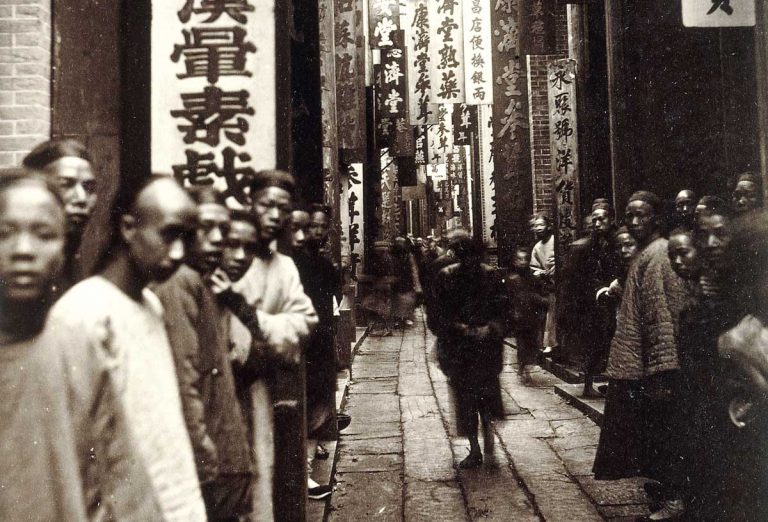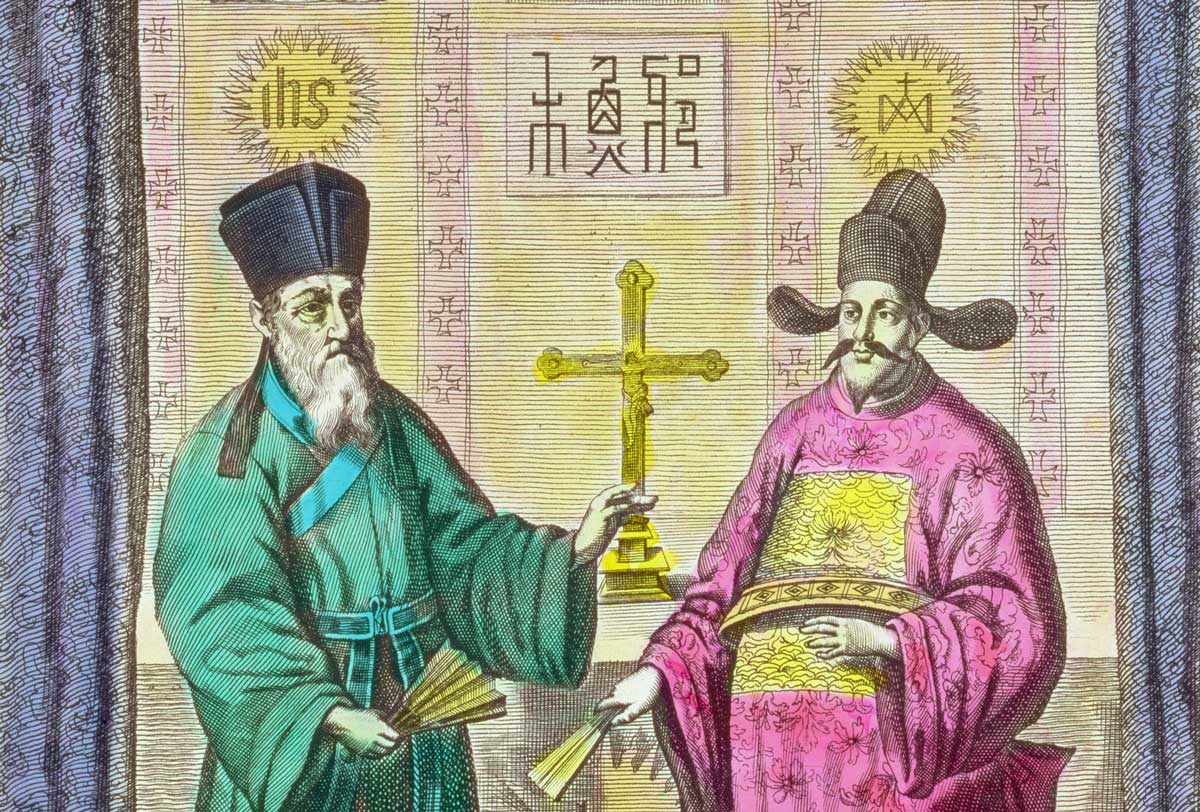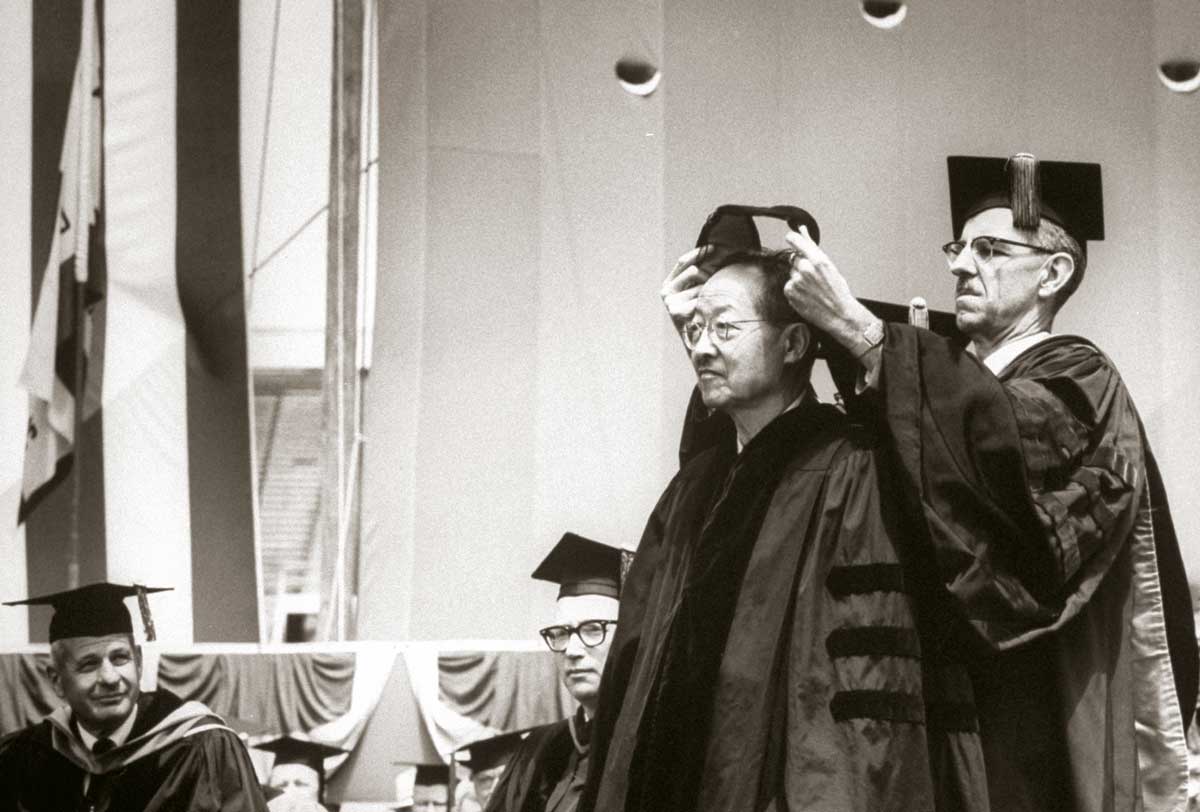
Believing language would unify their struggling nation, Chinese officials began a project to create a national language and define what it meant to speak Chinese.
By Gina Anne Tam
The Chinese language is deceptively difficult to define. To speak ‘Chinese’ today usually means Mandarin, the national language of the People’s Republic of China (PRC) and Taiwan. Called Putonghua, or the ‘common language’, in China, or Guoyu, the ‘national language’, in Taiwan, Mandarin is what citizens of Taiwan and the PRC learn in schools and hear on TV and in films and from their political leaders. It is taught in Chinese-language programs around the world and represents ‘China’ at the UN or WHO.
Yet Mandarin is by no means the only language that could be called ‘Chinese’. Leaving aside the Chinese script, itself having a long, complex history, ‘Chinese’ also refers to a large number of spoken languages that are mutually unintelligible with Mandarin: from the ‘ancient’ Chinese of the Tang dynasty (AD 618-907) to a multitude of local languages. These include well-known ones, like Cantonese or Hokkien, with millions of speakers, and dozens, if not hundreds, of others. The Chinese government officially recognizes these languages, from the widely spoken to the smaller variants, as fangyan – a word that dates at least to the second century BC, most frequently translated as ‘dialect’. But such a translation is inherently problematic. Dialects are subordinate – a dialect only makes sense if it is a dialect of something – and are mutually intelligible with the language they are a dialect of and with one another. These criteria do not apply to all, or even most, Chinese fangyan. Cantonese is not mutually intelligible with Shanghainese, nor is Qingdao-ese mutually intelligible with Hakka. And though the Chinese government calls Mandarin a ‘language’, a title not afforded to other fangyan, fangyan are not derived from Mandarin.

Despite this, however, the Chinese government insists that fangyan ought to be translated using the English word dialect, with all its connotations. Educational materials and popular media call fangyan ‘variants’ or ‘branches’ of the Chinese language and high-profile government figures are often found directly refuting the suggestion that fangyan could be considered independent languages. Mandarin, on the other hand, is officially called the ‘common language of the Han people’ without which society can neither ‘be preserved, develop, or progress’.
Why, then, does the Chinese government insist not only that Chinese fangyan ought to be translated as dialects, but, more importantly, that they should be treated as such in academic research, education and public policy? The presumption that fangyan are subordinate was neither natural nor pre-ordained. Rather, it was a historical process, one that fundamentally shifted the relationship between language, nation and collective identity.
The politics of translation
The word fangyan is comprised of fang, ‘place’, and yan, ‘language’; taken together, a literal rendering might be ‘language of place’. For millennia, fangyan was a common term for referring to local languages of particular regions. It rarely carried any hierarchical implications.
When thought of as ‘languages of place’, other English terms might have been more logical equivalents and were, in fact, used for centuries. Matteo Ricci, the first European Jesuit to live in China, in the late 16th century, used the Latin word vernacula, frequently translated as ‘colloquial’, to describe local languages. Later missionaries added ‘vernacular’ and ‘dialect’ to the growing list of terms. By the mid-19th century, the rapidly expanding population of Protestant missionaries, given imperialistic license to settle in villages throughout the Qing Empire, used these English terms interchangeably. The first written source to directly translate ‘dialect’ as fangyan was probably the British diplomat Herbert Giles in his A Chinese English Dictionary of 1892.
We can attribute some of this uncertainty to the fact that a translation is only as good as the translator’s knowledge and, before the 19th century, Europeans knew very little about China. Faced with the unknown, they drew parallels between their scattered observations and their known phenomena at home. Take, for instance, the 19th-century Scottish missionary Carstairs Douglas. Stationed in Amoy (now Xiamen), Douglas looked at the languages around him and noted that they were mutually unintelligible with the language spoken in the imperial capital. He also observed that the local Xiamen language was spoken by members of all classes, not simply the lower classes. As such, in his Dictionary of the Spoken Language of Amoy, he argued that because ‘colloquial’ implied that fangyan were only spoken by lower classes and ‘dialect’ implied they were branches or auxiliaries, neither translation fit. Douglas ultimately settled on ‘vernacular of’ and ‘spoken language of’ to describe fangyan. But not all missionaries had the same experiences as Douglas.

At their core, disagreements over translations stemmed from the fact that Europeans struggled to define what China’s language was. Was it the formal language that appeared in elite written texts, a tradition that they saw as akin to Latin? Was it the oral language spoken in the imperial capital, what 19th-century Europeans called the ‘language of the Mandarins’? Because European and American observers disagreed on what constituted the ‘Chinese language’ – or if such a thing even existed – there was no clear consensus on how fangyan related to it; whether they were dialects, or something else.
That was, until the early 20th century. The final years of the Qing dynasty marked a watershed, as domestic turmoil encouraged unprecedented creativity in imagining what a modern Chinese nation might look like. This intense experimentation ultimately shattered many well established sociocultural frameworks and norms, including ideas about language. The meaning of spoken language in China – an integral part of what ‘China’ was – would never be the same.
A ‘Chinese language’
It is frequently taken for granted that the history of Chinese language in the 20th century is first and foremost a history of Mandarin. The commonly told narrative is straightforward. At the turn of the 20th century, China had just endured half a century of rebellion, war and semicolonialism. Convinced that the best way to strengthen and save their nation was to mould the subjects of their fallen empire into a culturally united citizenry, reformers and revolutionaries, supported by the new Republican government, placed the creation and promulgation of a national language at the forefront. Men came from north and south to gather in the capital, where they chose, by vote, a fangyan to serve as the national language. Though contentious, Beijing was ultimately victorious.
The actual story of how Beijing ‘won’ is far more complex than this retelling may suggest. To imagine the process of creating a Chinese national language as a close vote and a regional power struggle is to ignore how these men actually conceived of a ‘Chinese language’: not as one language among many, but a linguistic representative of the nation’s soul. The question these reformers were asking was not ‘which fangyan do we choose?’ but ‘how do we encapsulate what it means to be Chinese in a spoken language?’
Indeed, before the 20th century the idea of a singular, spoken Chinese language was a foreign concept. That is not to deny that China has a long history of thinking about its own language. Since at least the second century, dictionaries, rime tables and treatises analyzing the Chinese script, grammar, phonology and oral diversity were being written. But while Chinese thinkers frequently mentioned ‘official languages’, this was by no means synonymous with a ‘national language’ – a language unified in its sound and script used by and representative of a Chinese nation.
This changed in the early 20th century, when the ‘Chinese language’ suddenly transformed from a foreign construct to an almost existential problem. A sequence of military defeats beginning with the First Opium War in 1842 made many elites question where their empire had gone wrong. They began with the obvious suspects. They noted that China’s military technology lagged behind that of their foes and that soldiers lacked the training and discipline necessary for modern warfare. But nearly half a century of lost wars left the Qing beleaguered, forcing many to wonder if the source of these losses was much more fundamental. Some began to argue that the Qing’s weakness lay not in something concrete, such as infrastructure, but in the country’s very cultural anatomy, of which language was a central part.
Unity and disunity
The idea that China’s national weakness stemmed in part from its lack of linguistic unity was something that Western missionaries and old China hands frequently repeated. Some wrote that China’s local patois were ‘so numerous that persons of neighboring provinces … are frequently unable to carry on a conversation of any length without having recourse to writing’. Others criticized the Chinese script as being ‘hieroglyphics’ that facilitated disunity, arguing that the Roman alphabet would be the ‘readiest gradus ad Parnassum [steps to Parnassus]’ to mutual linguistic intelligibility. Their diagnosis was simple: China could never be a modern nation if it did not have a national, unified tongue.
After the overthrow of the Qing dynasty in 1911, there were few bureaucratic barriers to aggressive administrative action, allowing the founders of the new Republic of China to make language reform a top legislative priority.
Yet the question of how to unify the ‘Chinese language’ had few easy answers. Some, looking at France and Japan, thought that the national language should simply be the language of the seat of government, meaning the national language would be based on the language of Beijing. This proposal, however, was met with fierce opposition. As the former capital of the fallen Qing dynasty and a region that had, for large swathes of Chinese history, been ruled by non-Han Chinese ethnic groups, Beijing was too ‘foreign’ to be an acceptable representative of China. Instead, it was argued that any language that represented the Chinese nation should not simply be chosen from existing fangyan, but constructed as an ideal: a new language that represented the historic unity of the Han Chinese people and the language they spoke at the dawn of Chinese civilization thousands of years before. After a contentious meeting in 1913, the Committee on the Unification of Pronunciation agreed on the first Chinese national language, adopting an amalgamated, invented construction that was largely based upon the language of Beijing, but included key elements from other fangyan.
Inevitably, this national language seemingly born of compromise pleased few people. Those who had been tasked with the practical work of spreading it to the population quickly saw its shortcomings, casting doubt on the government’s ability to teach the nation a language with no native speakers. Even those who initially advocated a bold, experimental language began to question its feasibility. The linguist Yuen Ren Chao, for example, graduate of Cornell and Harvard, was so committed to this hybridized national language that he had made a recording of it to be used in classrooms across China in 1921. But by 1924 he admitted to friends and family that its artificial nature created too high a barrier. Reflecting on his experience, Chao laughed: ‘For 13 years I was the sole speaker of this idiolect, meant to be the national language of four, five, or 600 million speakers.’
And so this dream of an idealized, constructed national language fizzled out. In 1925 the government officially declared that China’s Guoyu (or national language) would be based on the language of Beijing. But, although the reformers abandoned their idealized language in favor of simply making Beijing’s language their national tongue, the unrealized dreams did not simply disappear. The idea that a Chinese language had to represent all of China, not just part of it, continued to imbue language policy.
The constructed language also, in part, laid the foundation for imagining fangyan as subsidiary branches of a Chinese language. In conceiving of the Chinese language as something rooted in and connected to all of China’s fangyan, it made logical sense to think of fangyan as pieces or branches of it, subsidiary to the national language. The project’s failure did not erase the hierarchical implications it seeded. (Continues)
_____________________
Gina Anne Tam is assistant professor in History at Trinity University, Texas and the author of Dialect and Nationalism in China, 1860-1960 (Cambridge, 2020).
Courtesy: History Today